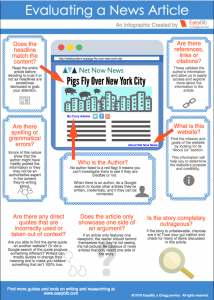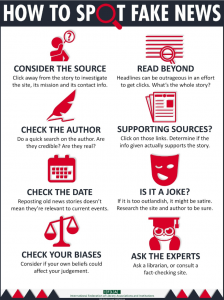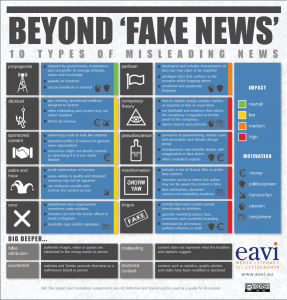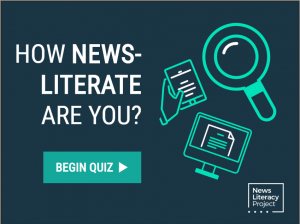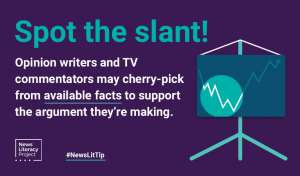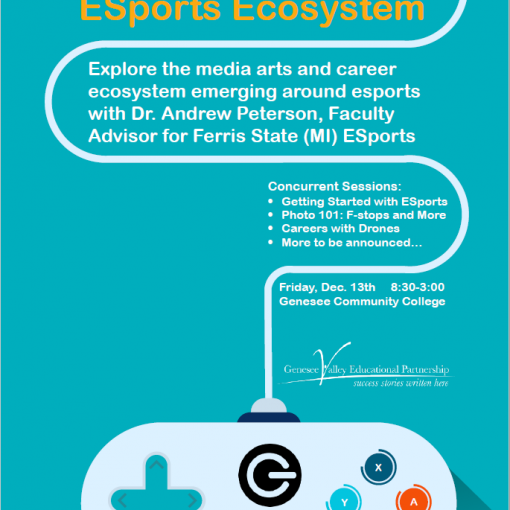Thursday, October 24th
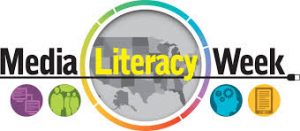
This week is U.S. Media Literacy Week! The mission of the week is to highlight the power of media literacy education and its essential role in education all across the country.
Remember PizzaGate: when headlines stated that Hillary Clinton ran a child sex ring out of a pizza shop in Washington, D.C.?
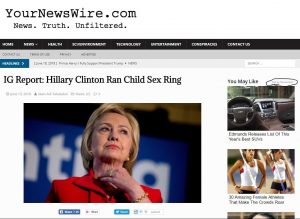
Fake news. But a lot of people believed it, at least for a little while. Then there’s the terminology, “Fake News”, being bandied about by politicians to denounce real news. Why?
There’s a major misunderstanding between fake news, truthful news, and biased news. It’s a lot to digest, especially for a young person who may have only recently begun reading the news.
Look at these four headlines. Can you tell which media outlet wrote them? Do you think your students could tell?
- “More than half the House of Representatives support impeachment inquiry”
- “Mike Pompeo Blasts House Democrats’ Impeachment Inquiry: ‘Silly Gotcha Game’”
- “White House Unveils Lightly Edited Memorandum Of U.S. Constitution That Specifically Declares Trump’s Innocence”
- “Pelosi Announces Impeachment Inquiry of President Trump”
There are luckily a lot of activities available for teaching students how to tell the difference between truth and bias.
This video from Common Sense Media gives five tips for spotting fake news.
(If YouTube is blocked in your school, you can find the video here: https://www.commonsensemedia.org/videos/5-ways-to-spot-fake-news)
These infographics were created by #1: EasyBib (a Chegg service), #2: The International Federation of Library Associations and Institutions (IFLA) and #3: eavi Media Literacy for Citizenship. (Right click each and open hyperlinks for full versions)
This online article from EasyBib tells us how to spot fake news: http://www.easybib.com/guides/10-ways-to-spot-a-fake-news-article/
But what about understanding biases in media?
ad fontes media posts an interactive chart showing the reliability and general biases of the most popular media outlets. They include information about their ranking methodology and they update it regularly as things change. Find it here: https://www.adfontesmedia.com/how-ad-fontes-ranks-news-sources/
Students can take this News Lit Quiz by the News Literacy Project:
This poster is designed to help students understand opinion writing:
And when you’re completely overwhelmed, and tired from trying to navigate it all, you can always choose to watch https://newsforkids.net/ (which was created by a teacher), Teen Kids News: http://www.teenkidsnews.com (just be careful of the ads), https://www.cnn.com/cnn10 (news explained in 10 minutes),
…
or wind down watching this clip of 5-year-old Noah Ritter on his local news in 2014:

